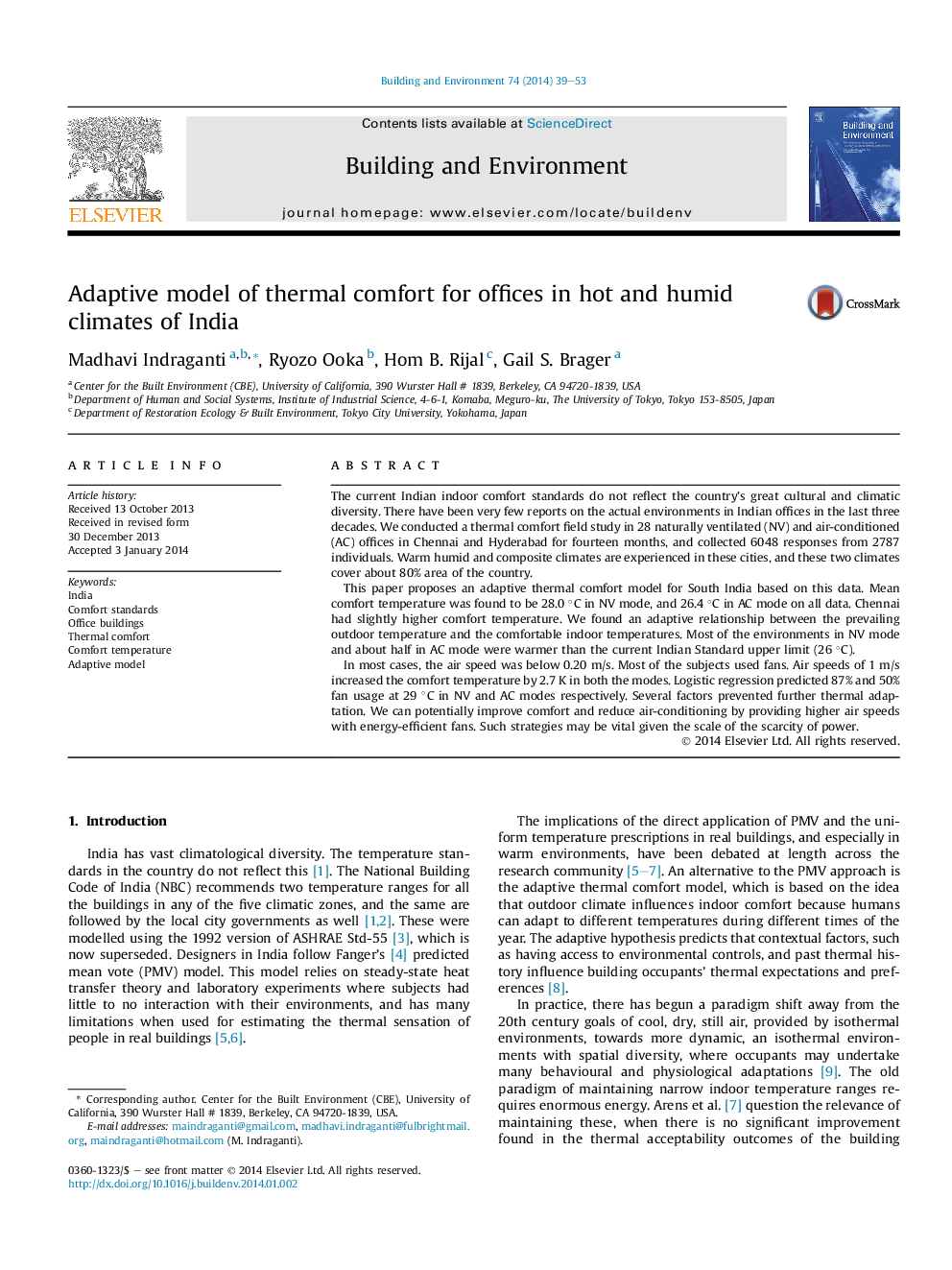| کد مقاله | کد نشریه | سال انتشار | مقاله انگلیسی | نسخه تمام متن |
|---|---|---|---|---|
| 248153 | 502549 | 2014 | 15 صفحه PDF | دانلود رایگان |
• We did a thermal comfort survey in 28 offices in Chennai and Hyderabad for 14 months.
• We found the adaptive comfort model for South Indian offices as Tcomf = 0.26 Trm + 21.4.
• Mean comfort temperatures of 28.0 and 26.4 °C in NV and AC modes were noted.
• Mean indoor air speeds were below 0.20 m/s most of the time.
• Air speeds of 1 m/s increased the comfort temperature by 2.7 K in both the modes.
The current Indian indoor comfort standards do not reflect the country's great cultural and climatic diversity. There have been very few reports on the actual environments in Indian offices in the last three decades. We conducted a thermal comfort field study in 28 naturally ventilated (NV) and air-conditioned (AC) offices in Chennai and Hyderabad for fourteen months, and collected 6048 responses from 2787 individuals. Warm humid and composite climates are experienced in these cities, and these two climates cover about 80% area of the country.This paper proposes an adaptive thermal comfort model for South India based on this data. Mean comfort temperature was found to be 28.0 °C in NV mode, and 26.4 °C in AC mode on all data. Chennai had slightly higher comfort temperature. We found an adaptive relationship between the prevailing outdoor temperature and the comfortable indoor temperatures. Most of the environments in NV mode and about half in AC mode were warmer than the current Indian Standard upper limit (26 °C).In most cases, the air speed was below 0.20 m/s. Most of the subjects used fans. Air speeds of 1 m/s increased the comfort temperature by 2.7 K in both the modes. Logistic regression predicted 87% and 50% fan usage at 29 °C in NV and AC modes respectively. Several factors prevented further thermal adaptation. We can potentially improve comfort and reduce air-conditioning by providing higher air speeds with energy-efficient fans. Such strategies may be vital given the scale of the scarcity of power.
Journal: Building and Environment - Volume 74, April 2014, Pages 39–53
